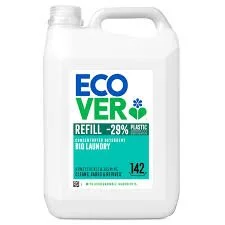Eco-washing: a clean way to save the planet
By Daniel Butler: author and forager
Now this blog might be about ways to save the planet, but it appears to have very little to do with mushrooms. Well, spoiler alert, read on - there is actually an important connection.
Until very recently I preferred to wash up by hand, mainly because I thought it was 'greener'. It was far quicker than the dishwasher’s ‘eco-cycle’ and surely used less heat and water? Similarly, I would put clothes in the washing machine on shorter washes because I worried about the energy used by the three-hour ‘green’ cycle.
I then listened to a R4 programme on the science of dishwashing which explained why dishwashers are almost always better for the environment than a bowl in the sink.
Basically, hand washing uses far more heat and water than a machine. Research by the University of Bonn shows the British use an average of 49 litres of water in a sink wash, while a dishwasher uses 13 litres to clean the same amount.
The reason for the discrepancy is because a washing bowl or sink typically holds at least 10 litres and most people not only use very hot water, but also have a running tap to clean dishes before washing, plus using this again to rinse things as they emerge from the suds.
In contrast, a dishwasher uses about five litres of cold water in its initial few minutes, spraying it up into the dishes before sieving and recirculating this about 10 times a minute. The next cycle uses hot water, but again this is repeatedly recycled to conserve both water and heat, before the final cold rinse with fresh water.
All the same, the length of most ‘eco-cycles’ seems counter-intuitive: surely a two-hour cycle must use more energy than 15 minutes at the sink? Well, no, it all hinges around heating water which is very energy-intensive. In comparison it takes very little energy to circulate small volumes of water. Long cycles at low temperatures also give the vital microscopic enzymes in modern washing products time to cut up waste food particles every bit as effectively as conventional detergents working at higher temperatures.
Now, all of the above is based on dishwashers, but the same principles apply to washing machines. Long, low-temperature, cycles using bio washing detergents are good for the planet because they use much less energy and water than their shorter equivalents.
Now at this point we turn to the fungal connection. The enzymes used in ‘bio’ washing products are manufactured using micro-fungi. These are natural microscopic ‘scalpels’ which break down longer organic chemicals. Our bodies are full of them – remember the school science lesson where you placed a sliver of raw potato in your mouth and waited for it to turn sweet as the starch was broken down into sugars?
Some people still avoid ‘bio’ products, however, believing they irritate sensitive skins (especially those of babies). An academic mycologist friend of mine laughs at this, however. She points out the enzymes are very expensive to produce, so are only used in minute amounts and they are designed to be washed away completely. She believes that almost all adverse reactions are down to the artificial perfumes in cheap powders and fabric conditioners. Unlike the enzymes, these are obviously designed to be difficult to wash out and will linger on plates and clothes, sometimes causing irritation to delicate skins or palates.


